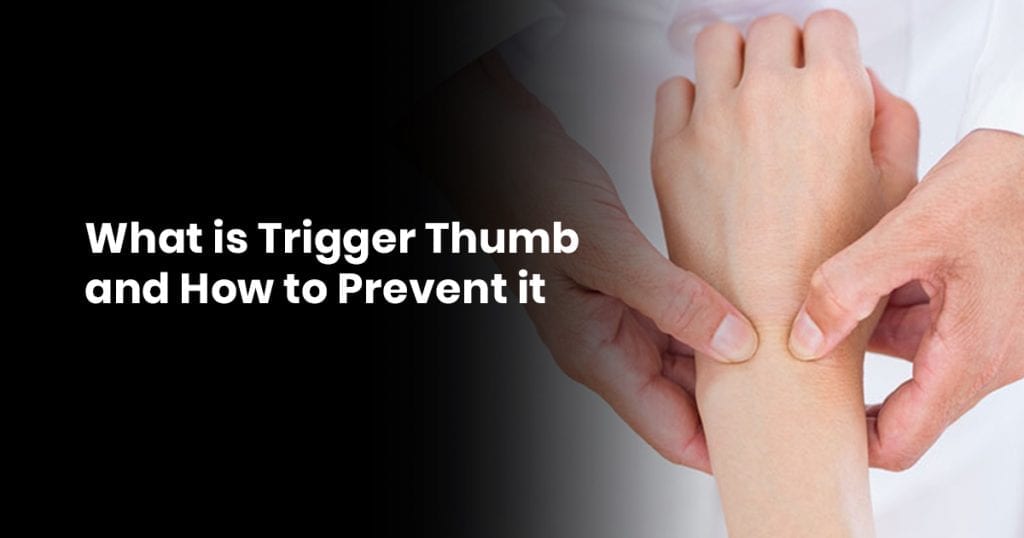If you’ve ever heard a popular movie talk about having an itchy trigger finger, well, you already know a bit about what trigger thumb is.
Trigger thumb normally specifically applies to archers since we’re constantly using high pressure bowstrings against our thumbs, but trigger finger, the overarching condition, can affect firearm users as well.
It’s a nasty bit of business, but if you know how to take care of it, you’re not going to see any long-term damage.
In this, we’re going to talk about how you end up with trigger thumb/finger in the first place, and a ton of ways on how to prevent it.
Keep in mind that as you age and you put in more time behind the bowstring, your chances of trigger thumb are going to increase.
That’s just something that’s unavoidable, but you can prolong its effects on your archery and overall quality of life.
Archery and bowhunting have been practiced for a long time.
These activities require a little bit of skill and precision.
However, they can also put strain on the fingers and hands, leading to a medical condition like trigger thumb.
Trigger thumb, also known as stenosing tenosynovitis, is a condition that affects the tendons in the thumb, causing them to become inflamed and swollen and making it difficult to straighten or bend.
This can result in difficulty straightening or extending the thumb, as well as a clicking or popping sensation when moving it.
It is a common condition among archers and bowhunters, as the repetitive motion of drawing and releasing a bowstring can put strain on the tendons in the thumb.
Bow Hunting Causes of Trigger Thumb
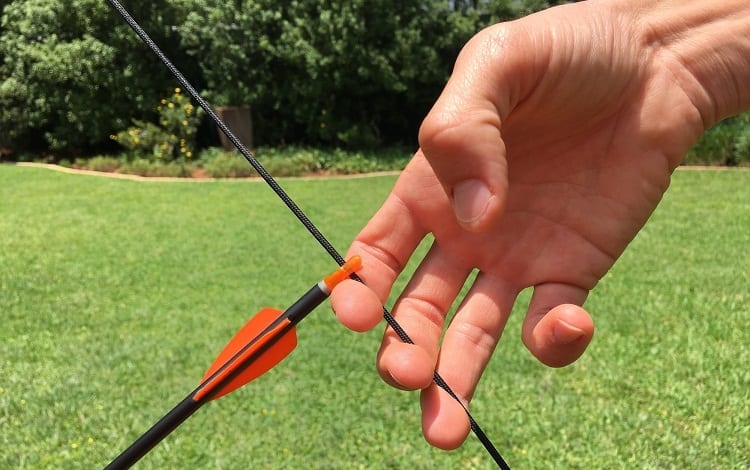
Picture your hands similar to the construction of a compound bow: there are pulleys that let everything move, and without them, you would be locked up, unable to go anywhere.
Using a recurve bow or compound bows on a regular basis could be the main reasons of trigger finger.
The tendons in your hands are connected to your bones, and they act like pulley systems that allow your brain signals to accurately dictate muscle adjustments and bone shifting.
The repetitive motion of pulling back the bowstring puts strain on the tendons in the fingers, particularly the middle finger.
Over time, this can lead to inflammation and thickening of the tendon sheath, making it difficult for the finger to glide smoothly.
When these get irritated, that’s when you run into problems.
Consider that you’re holding them tightly for 10-25 seconds at a time, at the very least, while your bow is fully drawn back.
It’s going to take its toll on your joints after a while.
Repeated actions that bring on this severe level of irritation cause full-blown cause of trigger finger, or trigger thumb.
Archery would be included in that category, as well as mundane tasks at work that require you to use your hands.
Doing the same thing over and over again is indicative of encountering some form of joint problems later on in life.
For example, those who type a lot end up with carpal tunnel, and the same logic can be applied here.
Note, trigger finger can also be caused by other daily activities that involve repetitive gripping or grasping motions.
Here’s some interesting facts I’ve dug up for you…
The exact cause of trigger thumb is unknown, but it is thought to be caused by inflammation of the tendon sheath that surrounds the flexor tendon in the thumb.
The tendon sheath is a thin tube of tissue that helps the tendon to glide smoothly as the thumb bends and straightens.
When the tendon sheath becomes inflamed, it can narrow and make it difficult for the tendon to move smoothly.
This can cause the thumb to catch or lock in a bent position.
There are a number of factors that can increase your risk of developing trigger thumb, including:
- Repeated use of the thumb: Occupations and hobbies that involve repetitive thumb movements, such as typing, playing a musical instrument, or gardening, can increase your risk of trigger thumb.
- Certain medical conditions: People with certain medical conditions, such as diabetes, rheumatoid arthritis, and gout, are at higher risk of developing trigger thumb.
- Age: Trigger thumb is more common in older people over the age of 40.
- Sex: Trigger thumb is more common in women than in men.
In some cases, trigger thumb can develop after an injury to the thumb.
If you think you may have trigger thumb, it is important to see a doctor or physical therapist to get a diagnosis and treatment plan.
High quality treatment options for trigger thumb include:
- Rest: Resting the thumb can help to reduce inflammation and pain.
- Splinting: Splinting the thumb in a straight position can help to keep the tendon from catching or locking.
- Corticosteroid injections: A cortisone injection can help to reduce inflammation and pain.
- Surgery: Surgery is rarely necessary, but it may be an option for severe cases of trigger thumb.
With early diagnosis and treatment, most people with trigger thumb make a full recovery.
You Are At Risk of Trigger Thumb from These Medical Conditions
Unfortunately, there are three major diseases that severely impact your viability as an archer.
These will provide difficulties for you to overcome throughout your entire archery career.
The best thing you can do is follow through with medical recommendations from your healthcare provider to mitigate disruptions to your archery.
- Diabetes: Diabetes is associated with PAD, which stands for peripheral artery disease. Blood vessels that carry blood to your extremities narrow, and from there, amputation becomes an increasing (sometimes daily) risk for diabetics. The blood vessel constriction is obviously a concern since you’re tightening the muscles in your hands and wrist, and constricting blood flow in the process.
- Gout: Gout is similar to rheumatoid in the way that it affects the joints. It causes inflammation, but through different means. Purines are in a lot of food we eat in modern society, which produce uric acid. For some, the breakdown of uric acid simply doesn’t happen. The result is painful, inflamed joints, and eventual kidney failure.
- Rheumatoid Arthritis: Rheumatoid affects your joints and causes massive inflammation across your entire body. It’s an autoimmune disease, so it’s constantly fighting the chemicals in your body that helps prevent inflammation when it’s not warranted. You’ll also note that arthritis in general affects joints, and that’s surely going to be a problem while shooting your bow. You can take anti-inflammatory medication prior to shooting your bow to help reduce your risks.
- Amyloidosis: Amyloidosis is a rare disease that causes amyloid proteins to build up in the body’s tissues. Amyloid proteins can also build up in the tendon sheath in the thumb, causing inflammation and narrowing.
- Hypothyroidism: Hypothyroidism is a condition in which the thyroid gland does not produce enough thyroid hormone. Thyroid hormone plays a role in regulating metabolism and growth and development. Low thyroid hormone levels can cause inflammation and swelling of the tissues in the body, including the tendon sheath in the thumb.
If you have any of these medical conditions, it is important to be aware of your risk of developing trigger thumb.
If you experience any symptoms of trigger thumb, such as pain, catching, or locking of the thumb, be sure to see a doctor or physical therapist for diagnosis and treatment.
Symptoms of Trigger Thumb
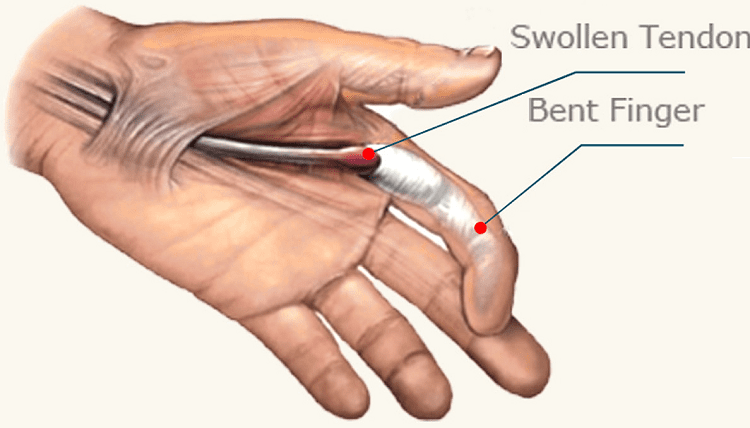
Symptoms include, but are not limited to the following.
Special cases may be strictly labeled as stenosing tenosynovitis, and require surgery to fix.
- Stiffness: Your finger is rigid and still to the point that you cannot move it. This causes you discomfort, and it’s hard to forget that it’s happening.
- Popping: If your finger pops or cracks when you move it, and you notice a small amount of resistance, this could be a symptom.
- Swelling: A swollen base of your thumb is indicative of a problem. You can feel the base of your thumb (where it connects to your hand) is partially swollen and causing discomfort.
- Bent Locking: If you cannot move it from a bent position, such as in the position to hold and release a bowstring, then you might have trigger thumb. Moving it causes immense pain and doesn’t budge the joint at all.
- Tenderness: Tenderness at the base of the joint that doesn’t dissipate in 48 hours is a serious concern. You may notice pain/discomfort rising from this point.
The joints lock up, and everything else feels painful.
You can usually feel the effects of trigger thumb if you move your other fingers, such as your index, and it is affecting the joint of your thumb.
Do not immediately assume symptoms mean you are about to have trigger finger; wait until problems persist for a short period of time before jumping to conclusions.
When an archer draws back the bowstring, the repetitive motion can strain the tendons in the fingers, leading to inflammation and swelling.
As a result, the affected finger may become locked in a bent position, making it difficult to straighten or flex.
To alleviate the symptoms of trigger finger, archers can use protective gear such as arm guards and finger tabs to reduce the strain on the tendons.
Anti-inflammatory medicines can help reduce swelling and alleviate pain, allowing archers to continue enjoying their sport without discomfort.
Finger Thumb Prevention Methods
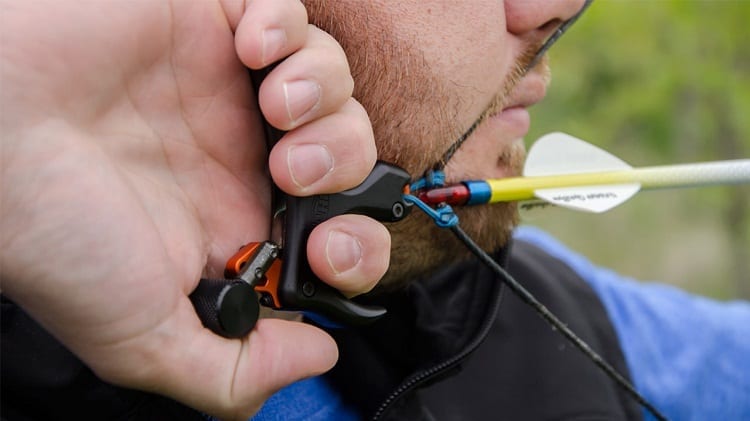
As a bow guy, it is important to take care of your hands and fingers to prevent trigger thumb.
This includes practicing proper hand and finger positioning when drawing and releasing the bowstring.
It is also important to take regular breaks and stretch your fingers and hands to prevent stiffness and strain.
Trigger thumb/finger is serious, and it can lead to surgery if you neglect to address the tension you’re feeling.
To prevent trigger thumb, it is important to take breaks and rest the thumb during long shooting sessions.
It is also recommended to use a bow release aid, which can help distribute the force of the bowstring more evenly and reduce strain on the thumb.
The best bow release can make a big difference in preventing trigger thumb.
A bow release is a device that helps archers release the bowstring smoothly and without strain.
Using a high-quality bow release can reduce the risk of developing trigger thumb by ensuring that the thumb is not subjected to excessive pressure or strain.
Also, maintaining proper form and technique while shooting can help prevent the development of trigger thumb.
This includes using the correct grip on the bow and ensuring that the fingers are properly positioned on the bowstring.
Using bow triggers or release aids can help distribute the force more evenly, reducing the strain on the thumb.
To prevent actually crossing over into trigger thumb territory, try these preventative methods.
- Use a Bow Release: Perhaps the best thing you can do is this. When you hold a bow release, you’re using the palm of your hand and all of your fingers to hold the handle in place. That’s evenly distributed tension; it’s not just climbing across your thumb or index finger. This helps out from extended use, but does not 100% protect you from trigger thumb, it just drastically lowers the chance that you will get it.
- Take a Break: Been shooting every weekend for years? Well, it may be time to skip a weekend. You’ll also need to pay attention to the tasks that you perform at home, so you can try to take it easy on your trigger hand. If you’re working in an environment that requires a lot of hand movement, you can move on to the next method.
- Thumb Splint: It wraps around your wrist and goes up your thumb. Even if you’re not in recovery mode from actual trigger thumb, this is a way to prevent it. If your boss or coworkers ask, mention that you do archery and sometimes your thumb gets damaged. People don’t wear casts/splints to work because they don’t want to work (they would just not show up instead). Don’t be ashamed to wear a splint if it means avoiding full-blown trigger thumb.
Can You Get Trigger Thumb from Crossbow Use?
Crossbow use and trigger thumb have been a topic of concern among enthusiasts.
Trigger thumb, also known as stenosing tenosynovitis, is a condition where the thumb’s flexor tendon becomes inflamed and causes pain and limited movement.
While trigger thumb is commonly associated with repetitive gripping motions, such as using tools or playing musical instruments, there is limited evidence linking it directly to crossbow use.
However, it is important to note that any repetitive motion involving the thumb can potentially lead to trigger thumb.
Therefore, it is crucial for crossbow users to practice proper hand and thumb positioning, take regular breaks, and listen to their body’s signals to prevent the development of trigger thumb.
When using a crossbow, it is essential to maintain a proper grip and avoid excessive force on the trigger.
This can help minimize the strain on the thumb and reduce the risk of developing trigger thumb.
Incorporating hand and thumb exercises into your routine can help strengthen the muscles and tendons, reducing the likelihood of developing trigger thumb.
It is worth noting that crossbow use involves a combination of gripping, pulling, and releasing motions, which can put stress on the thumb and surrounding structures.
However, the risk of developing trigger thumb from crossbow use is relatively low compared to other activities that involve repetitive thumb movements.
To further reduce the risk of trigger thumb, it is recommended to use crossbows with adjustable trigger pulls.
This allows users to customize the trigger’s sensitivity to their comfort level, reducing the strain on the thumb.
Regular maintenance and lubrication of the crossbow’s trigger mechanism can also help ensure smooth and effortless operation, minimizing the risk of thumb injuries.
While there is limited evidence directly linking crossbow use to trigger thumb, it is important for users to be mindful of their thumb’s health and take necessary precautions.
By practicing proper hand positioning, incorporating exercises, using crossbows with adjustable triggers, and maintaining the equipment, enthusiasts can enjoy crossbow use while minimizing the risk of trigger thumb.
You can get trigger finger, but your thumb usually isn’t where most of the tension is resting when you use a crossbow.
If you’ve ever fired a crossbow, you know that most triggers have a fair amount of resistance, and require a good squeeze to actually release the shot.
That’s good for safety, but bad for your joints.
It’s a lot of tension, and if you’re regularly using your crossbow, then it can absolutely lead to trigger finger.
It’s important to stay wary of any pain, inflammation, stiffness or soreness that you may feel during or after crossbow usage.
If you suffer from rheumatoid arthritis, it may be difficult to separate the differences in pain.
Trigger thumb pain will usually power through a couple of Advil though, so that’s one way to tell.
All About Trigger Thumb Surgery
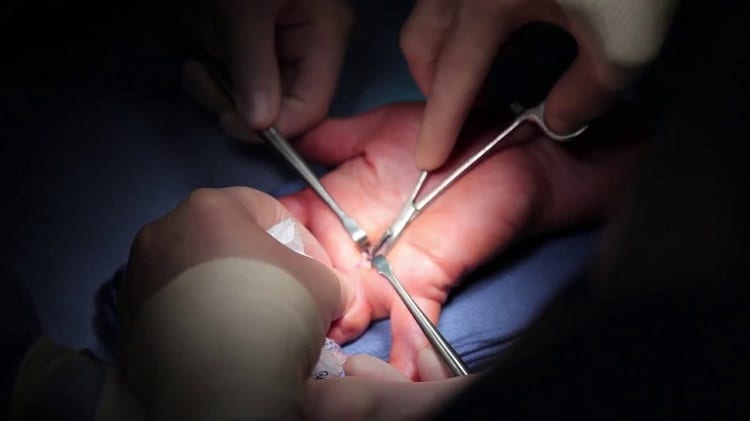
It’s the last thing anyone wants to think about, but going under the knife to fix it might be your best option.
Surgery is the last option that doctors want to approach, but under extreme circumstances, it may be a good thing.
Surgery is usually chosen if the trigger thumb sufferer is a diabetic, if pain is spreading from your thumb through your forearm from tendon rupturing, the pain is increasing even after you’ve rested your hand, and if you are suffering from the inability to perform simple daily household tasks.
Non-surgical methods are still preferred, as the recovery can be pretty brutal.
Recovery may include seeing a physical therapist for an unspecified amount of time, avoiding sports, and not performing archery for 3-4 weeks (due to the high tension).
You should be able to drive and perform simple tasks after a full week of recovery.
Cure Trigger Thumb Easily
Using these preventative measures, you should hopefully be able to evade surgery and remedy the situation before it ever starts.
Archery does increase your risk of trigger thumb, especially in older people, but that shouldn’t be enough of a reason to stop you.
At the very least, using a bow release will allow you to continue shooting your arrows even when you’re suffering from trigger thumb.
The worst part about it (aside from the pain) is fearing that you have to put your favorite hobby down; there are different ways around it, you don’t have to stop doing what you love.
If you are experiencing symptoms of trigger thumb for the first time, it is important to seek medical attention to receive a proper diagnosis and treatment plan.
A healthcare professional, such as a hand surgeon or orthopedic specialist, can evaluate your condition and recommend appropriate treatment options.
A healthcare professional can provide a proper diagnosis and recommend appropriate treatment options.
In some cases, non-surgical interventions such as splinting or corticosteroid injections may be sufficient to alleviate symptoms.
However, in more severe cases, surgery may be necessary to release the constricted tendon and restore normal thumb function.
Early intervention and preventive measures are key to avoiding long-term complications and maintaining optimal performance as a bow enthusiast.
If you are already experiencing symptoms of trigger thumb, there are several treatment options available.
Resting the thumb and avoiding activities that aggravate the condition can help alleviate pain and reduce inflammation.
Applying ice to the affected area is the first thing you can apply for temporary relief.
It is important to use proper form and technique when using a bow to minimize the risk of developing trigger finger.
Using a high-quality bow and regularly stretching and strengthening the fingers can help prevent this condition.

